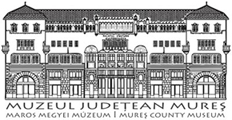Marisia - Maros Megyei Múzeum Évkönyve 31/1. (2011)
Articles
The Production of Prismatic Glass Bottles in Roman Apulum 177 by the medieval and the 18th century fortifications (Bälutä 1981; Bälutä 1983).3 The decoration was carved in the rectangular ceramic mould (maximum size: 9.5 x 9.8 x 2.5 cm) without external frame and consists of a circular retrograde inscription written between two concentric circles and of four small circles in the corners and one in the centre. The text bears probably the name of М(аркос,) Av(prjXtoq) Iovctoc and the letters BEBI which clearly do not belong to it. If the officina owner was Marcus Aurelius Iustus, then B(a)ebius or Bebius could be the name of the glassworker, or just a topographic indication. The mould is to be dated rather after the constitutio Antoniniana, and is also an important evidence for the predisposition to use Greek names as product or workshop brands (Ruscu 2003, 29, no. 27). More recently, a prismatic vessel fragment made with this mould (PL 1/3) has been discovered on the territory of the canabae (Bälutä 1999, 234, no. 434), so even if we cannot locate the workshop more accurately, one can say that it was functioning inside, or around the fort and it was providing at least the canabae with storage bottles. Only one vessel fragment with a base mark similar to this one (circular Greek inscription written between two concentric circles and a small central circle) is known from Dacia, which was discovered in Arutella (Bivolari, Valcea County, Romania).4 A base mould also quite similar to this one is kept in the Kocabas collection in Istanbul (Turkey).5 To link all these types of base marks to one workshop is tempting, but even with strong similarities in design; we must consider the fact that they bear different names. The similarities should be rather pointing out a trend in the production of the bottles, a preference for Greek brands, and an intensive exchange of‘know how’ between the different workshops, rather than a common production centre. In the Northern part of Colonia Aurelia Apulense (Fig. 2/B) in the area of the settlement with intensive industrial activity, during the recent excavations from the insula of the Liber Pater sanctuary a large concentration of raw glass cullets have been recovered. Some of the cullets were discovered in cultic pits and have been interpreted as possible evidence for votive offering of raw materials (Höpken 2004, 251; Höpken-Fiedler 2002, 376). Even if we cannot locate this workshop accurately, we can presume that it is located in the vicinity of this insula, and the possibility should be considered, that similarly to the high number of pottery kilns attested and excavated in the area (Ciusescu 2004, 320-321), we can have several glass-working sites as well. One of them has been excavated during rescue excavations undertaken by B. Cserni in 1911 -1913 in the north-western part of the Partos-quarter of Alba Iulia, which overlies the territory of the roman colonia. The author of the discoveries published a preliminary report about the excavations from 1911-1912 (Cserni 1912a) and an overview about some of the moulds (Cserni 1912b). In a larger paper about the activities of the Museum from Alba-Iulia he gives also a short summary about the excavation resoults from 1913 (Cserni 1913, 383-387). It is difficult to establish the exact location of the building, but based on the map published in 1912 (Cserni 1912a, 258, fig. I), we can state that it was located on the southern land strip between the main road and the railway track, in the vicinity of their junction (Moga-Ciugudean 1995, 42). 3 It is kept in the National Museum of Unification (MNUAI) from Alba Iulia, inventory no. 2641 (Bälutä 1999, 228-229, no: 425; Ruscu 2003, 29, no. 27; Amrein-Nenna 2006, 496, RO-M1). 4 The text bears the name MHNOOANT(OZ), and it was discovered in 1967 in the auxiliary fort. It is kept at the Central Military Museum from Bucharest, inventory no. 30799 (Florescu-Petolescu 1977, 225, no. 583; Ruscu 2003, 34, no. 38; Nenna 2006, 425, MN-RO-39). 5 This stone mould had a frame, which was broken, and the carved decoration consists of a circular retrograde text written between two concentric circles (the external circle is more prominent) and four small circles in the corners and one in the centre. The text bears the name APXECTPATOY (Nenna 2006, 496, TR-M-1).
